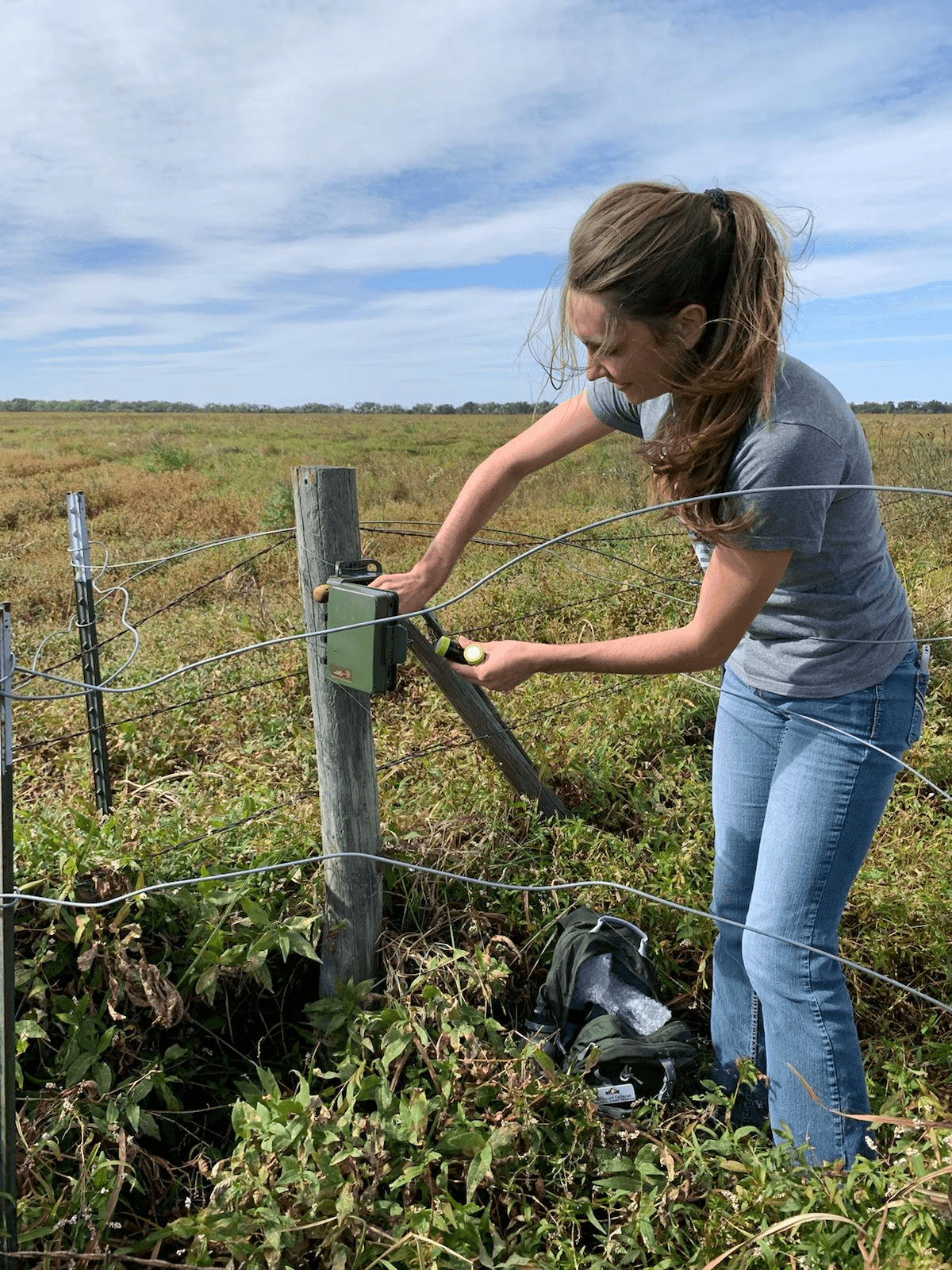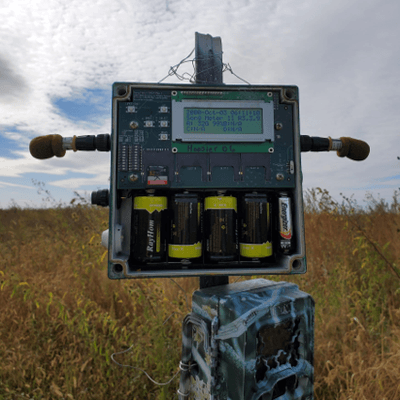
Welcome back!
This week, I am very excited to examine a topic that I recently learned more about and that is…soundscape ecology!
So, what is soundscape ecology? Soundscape ecology is the study of the acoustic relationships between living organisms and their environment. Think of it this way, while a landscape is everything you can see, a soundscape is everything you can hear! Take a moment right now and list out everything you can hear. Maybe that’s a fan running or a bird chirping through an open window; everything you hear in this moment is your soundscape. For the prairie and wet meadow ecosystems of the Crane Trust, soundscapes can include birds singing, anurans (frogs and toads) calling, and coyotes howling. Usually, in-person surveys are conducted to identify the species making these calls, but what about when no one is around to hear them?
Due to a variety of reasons including a lack of personnel, funding, or bad weather, not all organizations have the capability to study the species found within their soundscapes. To combat these issues, organizations can use passive methods of detections such as devices like audio recorders. Audio recorders can provide a more cost-effective and time efficient way to monitor vocal wildlife, such as birds and anurans. Thanks to a grant provided by Dennis Ferraro from the Nebraska Master Naturalists (will be linked) and Dr. Mary Harner from the University of Nebraska at Kearney, the Crane Trust was able to either obtain or borrow 14 audio recorders. These recorders are located throughout Crane Trust properties in order to learn more about prairie soundscapes when no one is around to listen (Pictured Below). By placing these recorders on or near points where avian and anuran surveys are conducted, it provides a baseline through which to compare methodologies and identify any potential sources of error for either survey type.

These recorders were originally setup by Andrew Caven, the Crane Trust’s Director of Conservation Research, but have since been taken over by Bethany Ostrom, the Crane Trust’s Biological Science Technician. The recorders are equipped with 2 microphones facing opposite directions (Pictured Below). They can be setup to capture various species and their unique frequencies at any variation of time. For the Crane Trust however, they are setup to record 5-minutes at the top of every hour, which allows for us to get a snapshot throughout the day, without having an accumulation of large amounts of data. They were also set this way to originally pair up with the Crane Trust’s 5-minute anuran surveys. In order to maintain these recorders, Bethany checks on each once a month to replace their rechargeable batteries and SD cards.


After downloading the recorder’s data onto a computer (and after some tweaking from Bethany Ostrom), they produce a spectrogram or visual soundwave (Pictured Below). This spectrogram is broken into the different frequencies and amplitudes heard by the recorder. The frequency refers to a sound’s pitch, was it high or low, while the amplitude is how loud a sound was. In the image below, you can see that the particular sound, indicated by the red circle, had a high frequency and a high pitch. Understanding these particular frequency and amplitude patterns can then help you to identify the different species being heard (Pictured Below). Though this technology sounds easy enough, how do we know if they are accurate? That is where Bethany comes back in!


While the Crane Trust has incorporated these audio recorders into their long-term monitoring research plan, Bethany is also using them as part of her Master’s thesis project titled “Monitoring Avian and Anuran Populations with Acoustic Indices in the Central Platte River Valley” at the University of Nebraska at Kearney. Her objective is to determine if acoustic indices that are derived from recordings can be used as a proxy for assessing avian and anuran abundance and community composition. In other words, she is looking to see if these recordings can be used to detect different species when in-person surveys for birds and anurans are not possible. This has the potential to help not only the Crane Trust, but other organizations, to monitor changes in avian and anuran communities throughout an ecosystem through a passive detection technique.
To learn more about audio recorders, including an exclusive interview with Bethany Ostrom about the ones located around the Crane Trust, visit this link: https://linktr.ee/cranetrustrecorders
P.S. Bethany, with the help of her committee, was able to make an educational video on YouTube about soundscape ecology. Check it out by clicking this link: https://youtu.be/ZOXba2uVHSQ
Until next time!
Cheers,
Amanda Medaries

